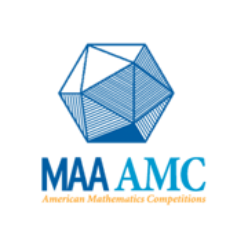2022年USAJMO 真题
Day 1
![]() For any geometry problem whose statement begins with an asterisk
For any geometry problem whose statement begins with an asterisk ![]() , the first page of the solution must be a large, in-scale, clearly labeled diagram. Failure to meet this requirement will result in an automatic 1-point deduction.
, the first page of the solution must be a large, in-scale, clearly labeled diagram. Failure to meet this requirement will result in an automatic 1-point deduction.
Problem 1
For which positive integers ![]() does there exist an infinite arithmetic sequence of integers
does there exist an infinite arithmetic sequence of integers ![]() and an infinite geometric sequence of integers
and an infinite geometric sequence of integers ![]() satisfying the following properties?
satisfying the following properties?
![]()
![]() is divisible by
is divisible by ![]() for all integers
for all integers ![]() ;
;
![]()
![]() is not divisible by
is not divisible by ![]() .
.
Problem 2
Let ![]() and
and ![]() be positive integers. The cells of an
be positive integers. The cells of an ![]() grid are colored amber and bronze such that there are at least
grid are colored amber and bronze such that there are at least ![]() amber cells and at least
amber cells and at least ![]() bronze cells. Prove that it is possible to choose
bronze cells. Prove that it is possible to choose ![]() amber cells and
amber cells and ![]() bronze cells such that no two of the
bronze cells such that no two of the ![]() chosen cells lie in the same row or column.
chosen cells lie in the same row or column.
Problem 3
Let ![]() and
and ![]() be fixed integers, and
be fixed integers, and ![]() . Given are
. Given are ![]() identical black rods and
identical black rods and ![]() identical white rods, each of side length
identical white rods, each of side length ![]() .
.
We assemble a regular ![]() -gon using these rods so that parallel sides are the same color. Then, a convex
-gon using these rods so that parallel sides are the same color. Then, a convex ![]() -gon
-gon ![]() is formed by translating the black rods, and a convex
is formed by translating the black rods, and a convex ![]() -gon
-gon ![]() is formed by translating the white rods. An example of one way of doing the assembly when
is formed by translating the white rods. An example of one way of doing the assembly when ![]() and
and ![]() is shown below, as well as the resulting polygons
is shown below, as well as the resulting polygons ![]() and
and ![]() .
.
![[asy] size(10cm); real w = 2*Sin(18); real h = 0.10 * w; real d = 0.33 * h; picture wht; picture blk; draw(wht, (0,0)--(w,0)--(w+d,h)--(-d,h)--cycle); fill(blk, (0,0)--(w,0)--(w+d,h)--(-d,h)--cycle, black); // draw(unitcircle, blue+dotted); // Original polygon add(shift(dir(108))*blk); add(shift(dir(72))*rotate(324)*blk); add(shift(dir(36))*rotate(288)*wht); add(shift(dir(0))*rotate(252)*blk); add(shift(dir(324))*rotate(216)*wht); add(shift(dir(288))*rotate(180)*blk); add(shift(dir(252))*rotate(144)*blk); add(shift(dir(216))*rotate(108)*wht); add(shift(dir(180))*rotate(72)*blk); add(shift(dir(144))*rotate(36)*wht); // White shifted real Wk = 1.2; pair W1 = (1.8,0.1); pair W2 = W1 + w*dir(36); pair W3 = W2 + w*dir(108); pair W4 = W3 + w*dir(216); path Wgon = W1--W2--W3--W4--cycle; draw(Wgon); pair WO = (W1+W3)/2; transform Wt = shift(WO)*scale(Wk)*shift(-WO); draw(Wt * Wgon); label("$W$", WO); /* draw(W1--Wt*W1); draw(W2--Wt*W2); draw(W3--Wt*W3); draw(W4--Wt*W4); */ // Black shifted real Bk = 1.10; pair B1 = (1.5,-0.1); pair B2 = B1 + w*dir(0); pair B3 = B2 + w*dir(324); pair B4 = B3 + w*dir(252); pair B5 = B4 + w*dir(180); pair B6 = B5 + w*dir(144); path Bgon = B1--B2--B3--B4--B5--B6--cycle; pair BO = (B1+B4)/2; transform Bt = shift(BO)*scale(Bk)*shift(-BO); fill(Bt * Bgon, black); fill(Bgon, white); label("$B$", BO); [/asy]](https://latex.artofproblemsolving.com/8/8/c/88c26c3ed57745f62327c44dc471fbe3c959a287.png)
Prove that the difference of the areas of ![]() and
and ![]() depends only on the numbers
depends only on the numbers ![]() and
and ![]() , and not on how the
, and not on how the ![]() -gon was assembled.
-gon was assembled.
Day 2
Problem 4
![]() Let
Let ![]() be a rhombus, and let
be a rhombus, and let ![]() and
and ![]() be points such that
be points such that ![]() lies inside the rhombus,
lies inside the rhombus, ![]() lies outside the rhombus, and
lies outside the rhombus, and ![]() . Prove that there exist points
. Prove that there exist points ![]() and
and ![]() on lines
on lines ![]() and
and ![]() such that
such that ![]() is also a rhombus.
is also a rhombus.
更多USAJMO 历年真题+真题详解
扫码添加顾问即可免费领取

